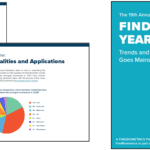
Biometric face authentication specialist FaceTec recently announced a major achievement: after undergoing a rigorous and transparent in-house benchmarking process, the company declared its ZoOm 3D FaceMap technology is “the best performing 1:1 face matching algorithm in history.”
Following a methodology detailed in a comprehensive white paper, the evaluation revealed a real-world false acceptance rate (FAR) of 1/4,200,000, with less than a one percent false rejection rate (FRR). According to FaceTec, that’s a 668 percent better performance than the top-reported NIST algorithm.
To shed more light on this achievement and better illuminate what this milestone means for FaceTec and the biometric authentication industry as a whole, FindBiometrics Managing Editor Peter Counter spoke with Kevin Alan Tussy, CEO of FaceTec.
Read our full interview with Kevin Alan Tussy, CEO, FaceTec:
Peter Counter, Managing Editor, FindBiometrics: FaceTec recently announced an impressive feat: ZoOm 3D FaceMap technology self-testing revealed it to be 668-percent better performing than the National Institute of Standards and Technology (NIST) #1 Leaderboard entry, boasting a real-world false acceptance rate (FAR) of 1/4,200,000 with less than a one-percent false rejection rate (FRR). What is the significance of this benchmarking result?
Kevin Alan Tussy, CEO, FaceTec: It’s significant because it proves 3D FaceMaps are superior to 2D photos in 1:1 authentication.
3D FaceMaps work at scale in real conditions, with real people, on real-world devices. Huge teams of experts have worked on 2D algorithms for decades, but they still aren’t even close to accurate enough for large scale centralized deployments. Just look at how many major announcements have been made by big brands launching “selfie pay” just to have the programs evaporate. This is because even the best 2D algorithms don’t work well on large datasets, but no one realizes that until the datasets get big. The biometrics industry and customers need to realize that 2D photos are a dead-end for 1:1 authentication; they just don’t contain enough unique human signal. Always remember the cardinal rule of biometrics: “garbage in, garbage out”. It’s the quality of the data in our 3D FaceMaps that allowed us to make these gains and blow away the NIST leaderboard.
FB: As a strong proponent of standardized third-party testing, what led FaceTec to conduct this matching assessment in-house?
FaceTec: Well, basically we had no choice. We would love to have had NIST verify ZoOm’s FAR/FRR, but NIST doesn’t have a 3D FaceMap dataset, so we had to do it ourselves. If we had a 2D algorithm, self-attestation would not have been appropriate. But since no one else can test 3D, we made sure that our extremely comprehensive white paper explained everything about the testing. And, logically, our outstanding performance just makes sense because we all know that 3D objects contain much more data than 2D photos.
FB: How soon do you expect industry testing and standards organizations to offer assessments for 3D face matching?
FaceTec: Unfortunately, there really aren’t any 3D solutions in the market other than Apple’s Face ID and FaceTec’s ZoOm, and Apple doesn’t usually submit it’s products for third-party security testing. However, as FaceTec continues to grow, we do hope to see a large third-party test done to verify our results, and I’m confident we’ll be even better than 1-in-4.2M by then.
FB: FAR and FRR are important statistics for measuring biometric matching accuracy, but they do not measure a biometric solution’s ability to detect a presentation attack, or spoof, which is arguably at least as important. How are FAR and FRR different from liveness detection, and how does it relate to your ZoOm 3D Authentication solution?
FaceTec: FAR is an effective guard against live human imposters, but Liveness is much more important. Since most attacks are spoofs, and you can only catch those with Certified Liveness Detection, it becomes your first and most important line of defense. If you have a weakness against even one type of spoof, bad guys will find it and quickly spread news of the vulnerability so they can all exploit it. This is why we focused on Liveness first at FaceTec, becoming the only company in the world to achieve Level 1 and 2 Certifications from iBeta based on the ISO 30107 global PAD standard. In fact, our Liveness Certifications put us in a unique leadership position, which we are using to educate both biometrics customers and the media.
FB: Your benchmarking announcement was accompanied by that thorough white paper you mentioned, explaining your methodology. What is the importance of that level of transparency when discussing biometrics performance claims? And how important is education around biometric authentication in general now that the technology is seeing mainstream daily use?
FaceTec: Transparency is everything, but there isn’t nearly enough of it in biometrics. For example when Apple launched Face ID, they said, “1 /1,000,000 False Accept Rate!” But they “forgot” to mention at what False Reject Rate. And it’s not just them. Many companies are out claiming “Robust Liveness Detection”, but it can’t be certified because it’s not actually robust. It’s snake oil, and once customers know better these companies won’t be around for long.
Transparency is why our ZoOm Demo Apps and Developer SDKs are available 24/7/365 for webcam, Android & iOS. We don’t make you “talk to a salesman” before you can try ZoOm, we let our tech speak for itself.







Follow Us